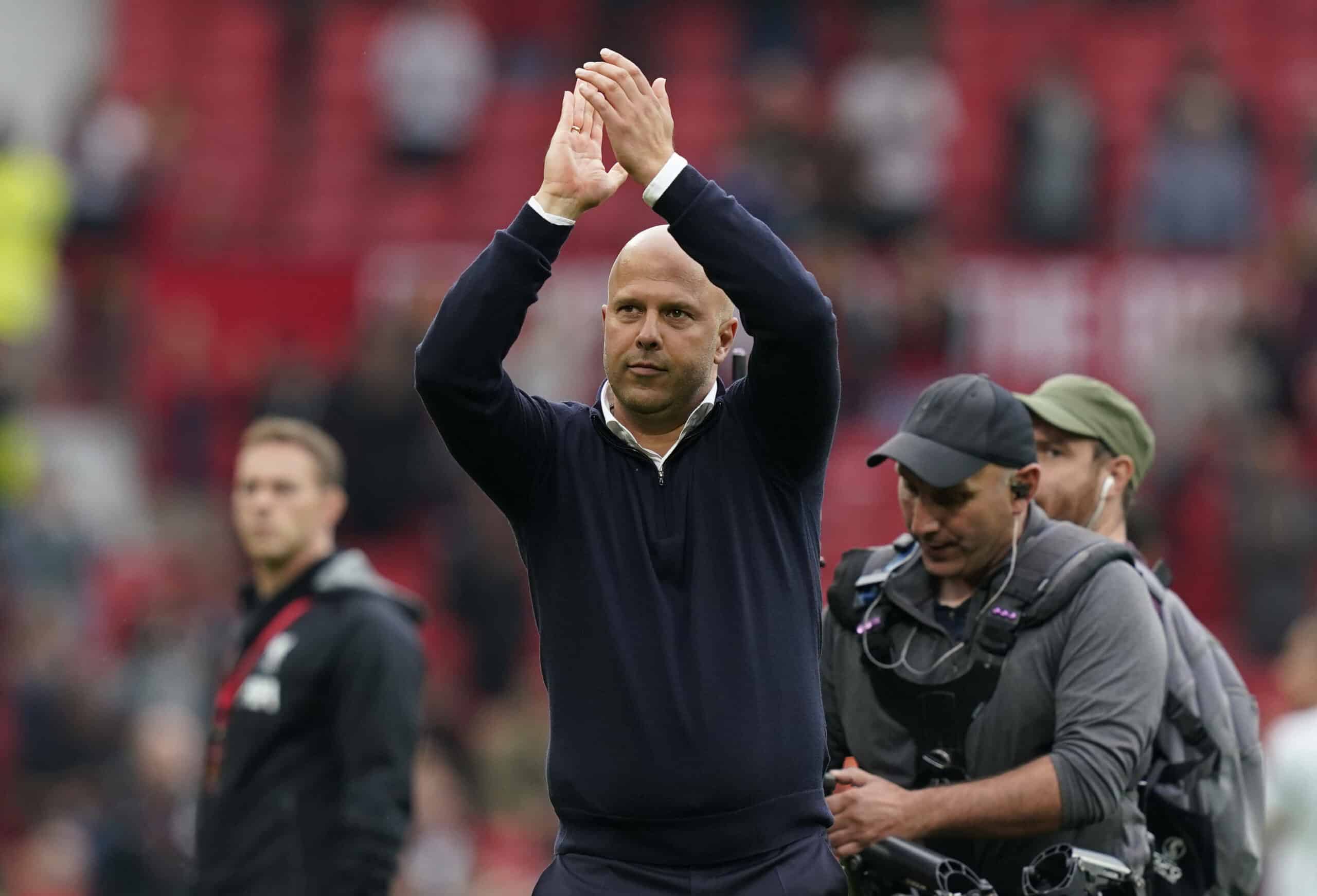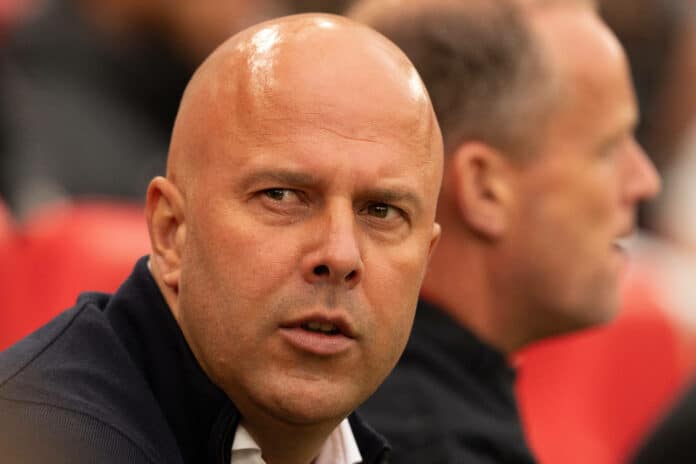Liverpool’s Tactical Masterclass at Old Trafford: A Detailed Breakdown
Liverpool’s recent 3-0 win over Manchester United at Old Trafford wasn’t just a display of individual brilliance; it was a tactical masterclass that once again highlighted the gap between these two historic rivals. Credit for the insights on this game goes to Panenka LFC, who thoroughly dissected the matchup in their latest analysis.
United’s Pressing Strategy: Tweaked But Ineffective
United came into this game with a slight tweak in their pressing strategy compared to last season. As noted by Panenka LFC, “The Dutchman explained after the game that Man United’s pressing was tweaked compared to last season. This season the number nine and ten initiated the press in a 4-4-2 shape, as we saw in their defeat to Brighton.” This adjustment, however, proved to be more of a hindrance than a help.
United’s 4-4-2 pressing system left them exposed in critical areas, allowing Liverpool to pick them apart with relative ease. The pressure from the front, led by United’s number nine and ten, was meant to disrupt Liverpool’s build-up, but instead, it played into the hands of Virgil van Dijk and the Liverpool defence, who baited the press brilliantly. Van Dijk, calm and composed, continually found ways to free up space for midfielders like Ryan Gravenberch to drop deep and receive the ball.
As Panenka LFC pointed out, “Virgil Van Dijk was brilliant at baiting the press, whilst freeing space for Ryan Gravenberch to drop deep and build the play.” This aspect of Liverpool’s play was crucial in bypassing United’s high press and opening up space further up the pitch.
Liverpool’s Early Settled Play: Dominating the Tempo
Liverpool wasted no time asserting themselves, getting into a settled rhythm just three minutes into the game. “The Reds’ first settled build-up play came after just three minutes with Trent Alexander-Arnold having the freedom to push high,” said Panenka LFC.
This early dominance set the tone for the match. Trent Alexander-Arnold, playing in his more advanced and creative role, had the freedom to push high up the pitch, contributing to Liverpool’s fluid and aggressive attacking play. His positioning forced United’s wingers to drop deep, further isolating United’s forwards from the rest of the team.
Liverpool’s ability to dictate the tempo from the start proved decisive. United, on the other hand, looked disjointed, with their pressing and defensive lines failing to work in harmony. The spaces between United’s midfield and defence were glaring, providing ample room for the likes of Dominik Szoboszlai and Luis Diaz to exploit.

United’s Defensive Set-Up: A 4-2-4 That Missed the Mark
One of the most surprising tactical decisions from Erik ten Hag was United’s defensive setup. “United actually started the game in a 4-2-4 to match up against Liverpool’s back line,” Panenka LFC observed. On paper, this might have seemed like a good idea—matching Liverpool’s formation to keep the game competitive in midfield. But in reality, it left United dangerously exposed at the back.
In theory, United’s 4-2-4 was supposed to press high and match Liverpool player for player. However, this aggressive shape left enormous gaps between United’s midfield and defence, especially when Liverpool played out from the back. The constant pressing from United’s forwards left their two central midfielders outnumbered and overrun by Liverpool’s more balanced and disciplined approach. As Panenka LFC remarked, “Man United’s constant shifting from side to side left huge space for the likes of Dominik Szoboszlai and Luis Diaz on the opposite side.”
Szoboszlai and Diaz were relentless, finding pockets of space and driving forward with every opportunity. Their movements constantly stretched United’s backline, creating scoring opportunities and forcing mistakes. By the time United adjusted, it was too late.
Van Dijk and Gravenberch: Orchestrating From Deep
Van Dijk’s calm presence at the back was key to dismantling United’s press, but he wasn’t alone in this. Ryan Gravenberch, playing deeper than usual, was equally instrumental in helping Liverpool break the lines and build play from the back. As Panenka LFC noted, “Van Dijk was brilliant at baiting the press, whilst freeing space for Ryan Gravenberch to drop deep and build the play.”
Gravenberch’s ability to receive the ball in tight spaces and play quick, incisive passes allowed Liverpool to transition swiftly from defence to attack. His deep-lying role also helped Liverpool control the game’s tempo, forcing United to chase shadows for large portions of the match.
Conclusion: A Tactical Victory for Slot
This 3-0 victory at Old Trafford wasn’t just a matter of talent; it was a demonstration of tactical superiority. Liverpool’s ability to adapt to United’s pressing, dominate possession, and exploit space in key areas was the hallmark of a team operating at its peak. In contrast, United’s tweaks to their system only served to expose their vulnerabilities, particularly in their high press and defensive organisation.
As Panenka LFC astutely pointed out, “Man United’s constant shifting from side to side left huge space for the likes of Dominik Szoboszlai and Luis Diaz on the opposite side.” This space was where Liverpool thrived, tearing apart United’s defence with relentless attacking play.
For Liverpool fans, this performance was a joy to watch, not just for the scoreline but for the way their team systematically dismantled their biggest rivals. For Manchester United, it’s back to the drawing board, as they’ll need more than just a tactical tweak to bridge the gap between themselves and their fiercest rivals.




